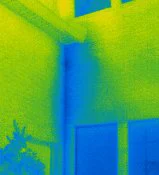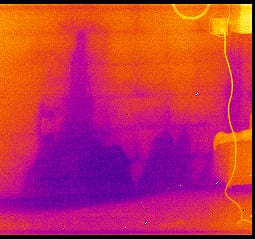Water leakage is mainly caused by poor building design, poor quality materials, poor finishing and aging building materials. Improper use of sanitary equipment and improper maintenance of the sewer pipe system can cause water leakage.
Moisture rises through the foundation - moisture from damp soil can rise to levels well above the ground due to capillary action. Rain bouncing off walls can also cause dampness.
One of the main causes of water leakage in bathrooms, toilets and other wet rooms is incorrect plumbing procedures, plumbing leaks, sanitary and waterproofing membrane damage.
Methods to check the water seepage
By observation: Look for water stains on the interior walls of the house - leaks. Check the source of the wall leak. A water leak can be caused by a leaky tank, a broken water line, or an old plumbing problem.
Using moisture meter: A concrete moisture meter is a type of moisture meter used by floor installers to measure the moisture level of concrete. These meters have been used for decades to measure the moisture content of various materials and substances. Concrete meters evolved from successful wood moisture meters when flooring contractors tried to use their wood meters to measure concrete moisture.

Thermography:
Moisture in buildings often disperses in recognisable ways depending on the location of the water:
Walls - form an upside-down triangle as water spreads downward
Ceiling - Amorphous, unstructured form, areas of wet, wet and wet material spread outwards with different temperatures

Flooding - water penetrates the insulation and wall studs through the wall core
Hot water pipes - Leaks appear as hot spots

Damp is one of the hardest problems to spot in buildings – the signs are subtle and easy to ignore until water starts dripping from the ceiling. Thermal imaging training can help you identify as well as get the right camera for the job.






Nice article. We use some thermography quite often at https://www.goawaterproofingservice.in. Helps in providing our clients with quality service!
Plumbers employ advanced methods for water seepage detection in buildings to pinpoint hidden leaks and prevent water damage. Techniques like thermal imaging, acoustic sensors, and moisture meters help identify sources of seepage without invasive measures. Early detection enables prompt repairs, preserving structural integrity and preventing mold growth. These methods ensure buildings remain safe and maintain their value by addressing water infiltration effectively.